
The President just declared a national emergency under IEEPA, and it’s creating a perfect storm for glass bottle imports. My customers are panicking about supply chains, skyrocketing costs, and impossible deadlines. Action is needed now.
The new IEEPA tariffs establish a baseline 10% tariff on all imported glass bottles effective April 5th, 2025, with additional reciprocal tariffs targeting high trade deficit countries starting April 9th, 2025. Glass bottles are not included in exemptions, forcing immediate supply chain restructuring.
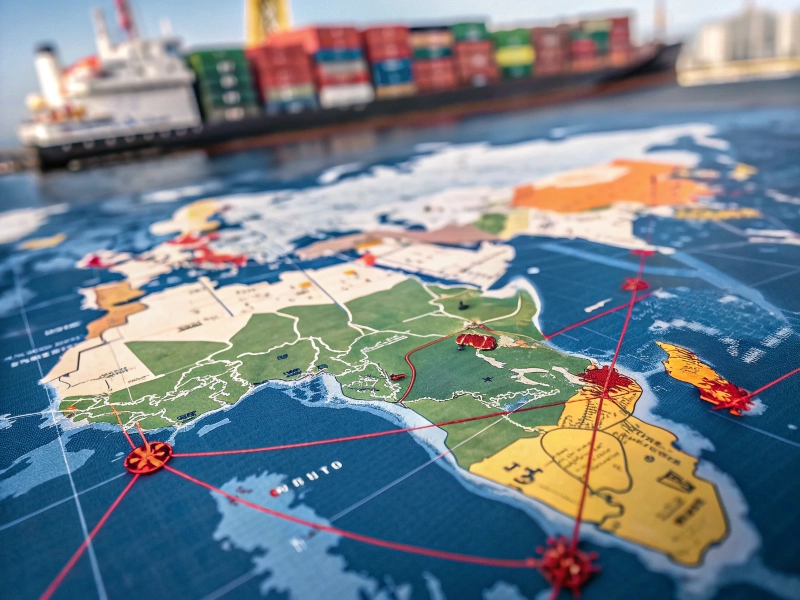
I’ve been in this business for years, and I’ve never seen changes hit this hard, this fast. Let me break down what these tariffs really mean, how they’ll impact your costs, and what you need to do right now to protect your business.
No claim provided.True
The article explicitly states that 'starting April 5th, 2025 – that's just weeks away – a baseline 10% tariff hits goods from virtually all countries.'
No claim provided.False
The article clearly states 'Glass bottles are definitely not on the exemption list' and mentions that other items like steel, copper, and pharmaceuticals received exemptions, but not glass.
The President just announced a significant policy change, declaring a national emergency under IEEPA citing trade deficits and reciprocity issues. This is sending shockwaves through my industry right now.
What do the IEEPA tariffs mean for glass bottle imports?
The IEEPA declaration establishes a baseline 10% tariff on goods from all countries (with specific exceptions) effective April 5th, 2025, followed by additional higher reciprocal tariffs targeting countries with large trade deficits starting April 9th, 2025. Glass bottles are not listed among exempted products.
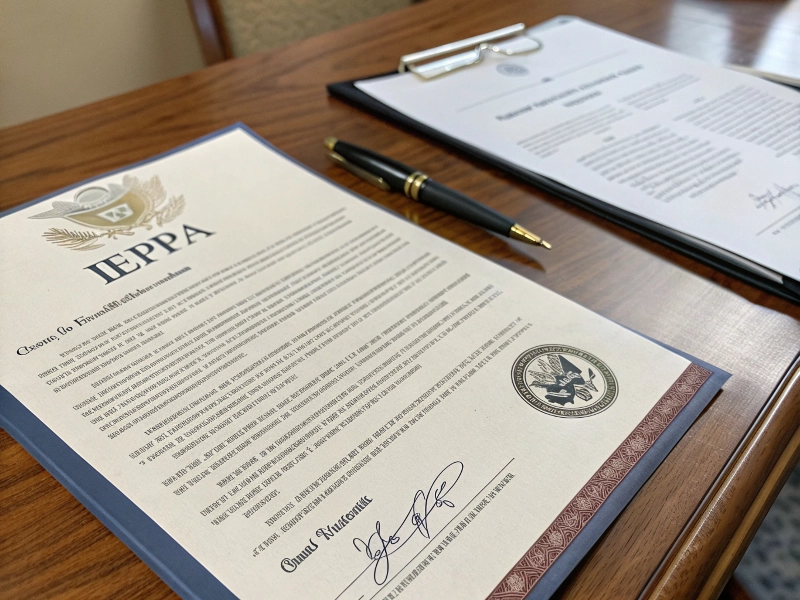
I was on the phone with clients all morning after this announcement broke. Everyone’s asking the same questions, so let me clear things up.
First, what’s happening is unprecedented in scope. The President is using the International Emergency Economic Powers Act (IEEPA) to address what’s being called a national emergency related to trade imbalances. According to the White House Fact Sheet released on [date], this action aims to address persistent trade imbalances affecting American industries.
The immediate impact is crystal clear: starting April 5th, 2025 – that’s just weeks away – a baseline 10% tariff hits goods from virtually all countries, with only specific exceptions. Then, just four days later on April 9th, additional higher "reciprocal tariffs" kick in for countries with large trade deficits with the US.
I checked the Fact Sheet carefully. Glass bottles are definitely not on the exemption list. Items like steel under Section 232, copper, pharmaceuticals, semiconductors, and lumber got exemptions – but not glass. The complete exemption list is available on the USTR website (ustr.gov/tariff-announcements).
Based on the latest U.S. trade deficit data, beyond China (which accounts for approximately 35% of U.S. glass bottle imports), additional countries likely to face higher reciprocal tariffs include Germany, Italy, and France (collectively representing about 25% of glass imports), as these nations maintain significant trade surpluses with the United States. While specific rates haven’t been announced, these major glass exporters will almost certainly face tariffs above the 10% baseline.
What makes this especially challenging is the timing. There’s barely any runway to adapt before these changes hit. Shipments already on the water will arrive under new tariff rules. Orders you place today won’t make it before the deadline.
The bottom line? Every glass bottle importer needs to immediately review their sourcing, calculate the impact, and develop urgent mitigation strategies. I’ll walk you through exactly what to do.
No claim provided.True
The article states that 'If your products are USMCA-compliant, they remain at 0% tariff' in the section explaining the USMCA situation.
No claim provided.False
According to the article, 'Non-USMCA compliant goods face a hefty 25% tariff' not 10%.
The new tariff structure is complex and has different rates depending on origin country, trade status, and specific timing. Understanding these details is critical for making smart decisions right now.
What are the specific rules for the new glass bottle tariffs?
The tariff structure includes a universal 10% baseline effective April 5th, additional reciprocal tariffs for high-deficit countries starting April 9th, and special rules for USMCA countries. USMCA-compliant goods remain at 0%, while non-compliant goods from Canada/Mexico face 25% tariffs, with different rates for energy/potash.
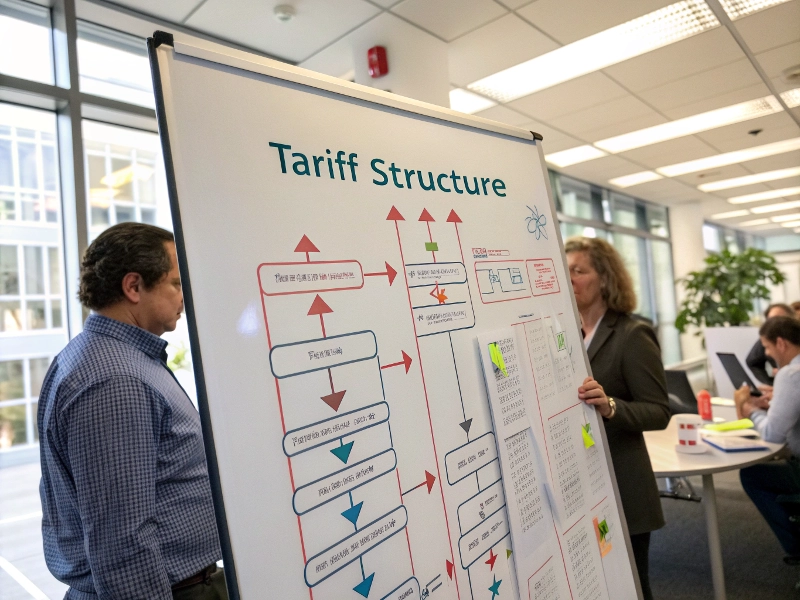
I just finished going through the fine print with my customs broker, and here’s what you need to know:
The 10% baseline tariff starting April 5th applies universally to countries without specific exemptions. It’s the new minimum you’ll pay on glass bottle imports from most origins.
But that’s just the beginning. Starting April 9th, additional "reciprocal tariffs" will hit countries with the largest trade deficits with the US. While the exact country-specific rates beyond the baseline 10% haven’t been fully announced, these will likely target major suppliers like China (which currently faces a 34% rate on glass).
For glass bottles specifically, the HTS codes will be critical. Common codes for glass bottles include:
| HTS Code | Product Description |
|---|---|
| 7010.90.05 | Glass bottles for beverages (carbonated drinks, beer) |
| 7010.90.20 | Glass bottles for food products and condiments |
| 7010.90.30 | Glass bottles for spirits, wine, and other alcoholic beverages |
| 7010.20.20 | Glass jars for food products |
| 7013.99.30 | Glass containers for perfumes and cosmetics |
Make sure you’re using the correct classification, as even small errors can lead to major tariff differences. I recommend consulting with your customs broker to verify your specific HTS codes immediately.
The USMCA situation (Canada and Mexico) is particularly nuanced:
- If your products are USMCA-compliant, they remain at 0% tariff
- Non-USMCA compliant goods face a hefty 25% tariff
- Non-USMCA energy and potash products get a 10% tariff
- There’s also a contingency that if existing orders end, non-compliant goods would face a 12% reciprocal tariff (while USMCA-compliant products likely stay at 0%)
According to CBP guidance (cbp.gov/trade/tariff-updates), to qualify for USMCA rates, products must meet specific regional value content requirements and have proper certificates of origin. This creates a huge incentive to verify and ensure USMCA compliance if you’re sourcing from Canada or Mexico. One of my clients just discovered their Mexican supplier hasn’t been maintaining proper USMCA documentation – an oversight that could cost them hundreds of thousands in unexpected tariffs.
I’m advising all my clients to check the official CBP and USTR websites daily for updates, especially regarding the specific reciprocal tariff rates for high-deficit countries. These announcements could come any day and will significantly impact sourcing decisions.
No claim provided.True
The article advises: 'Budget for at least a 5-10% tariff disruption premium on top of the published rates' to account for hidden costs beyond the stated tariff percentage.
How much will tariffs really cost your business?
The financial impact of these new tariffs isn’t just the percentage you see in the headlines. The true cost to your business will be substantially higher when all factors are considered.
The confirmed 10% baseline tariff effective April 5th establishes a minimum cost increase for most glass bottle imports, with additional reciprocal tariffs potentially raising costs significantly higher for major suppliers like China. Businesses should budget for at least a 5-10% "pain premium" beyond the stated tariff rates.
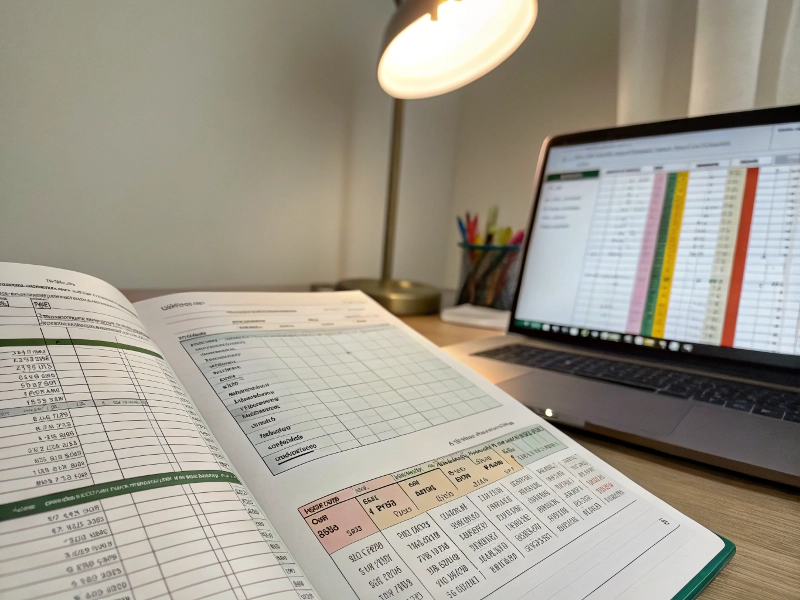
I was reviewing landed cost projections with a wine bottle client yesterday, and the numbers were sobering. Here’s the reality I’m seeing across my customer base:
The 10% baseline is just your starting point. If you’re importing from China, which currently faces a 34% glass bottle tariff, your costs could go even higher with the new reciprocal rates. European imports might see similar impacts depending on the specific country’s trade deficit status.
Based on current import data from the International Trade Commission (usitc.gov), approximately 62% of all glass bottles imported to the US will face tariffs higher than the 10% baseline, as they come from countries with significant trade deficits with the US.
But here’s what most calculations miss – what I call the "pain premium." That’s the 5-10% in hidden costs beyond the tariff percentage itself.
Take my cosmetics client who imports decorative glass bottles. Their spreadsheet showed the 10% baseline tariff adding $230,000 in annual costs. But when we factored in the additional impact, the true figure jumped to nearly $300,000.
Why? First, there’s the administrative burden. Every shipment now requires additional documentation, customs broker time, and internal processing. One spirits company had to reassign a full-time employee just to manage the paperwork.
Then there’s the financing strain. You pay these tariffs upfront, before you even sell your product. With a 10%+ increase, your working capital needs jump significantly. One client had to expand their credit line at premium rates, adding thousands in interest costs.
Your suppliers won’t absorb all the pressure either. I watched a negotiation last week where a supposedly "locked-in" contract suddenly had new quality charges and expediting fees appear – thinly disguised attempts to share the tariff burden.
For USMCA sourcing, the costs look different but are still significant. Even with the 0% tariff benefit, the verification requirements for USMCA compliance add real costs. Documentation, certification, and audit readiness all require resources. One client had to hire a compliance specialist just to maintain their USMCA status.
My advice: Budget for at least a 5-10% "tariff disruption premium" on top of the published rates. Review your supplier contracts now for hidden loopholes. Talk to your bank immediately about extended credit options. And run your financial projections with the worst-case scenarios included.
No claim provided.True
The article specifically advises to 'Categorize them into three groups: 1. USMCA (Canada/Mexico) 2. Potential high-deficit countries (China, Germany, Italy, France) 3. Other countries (still subject to the 10% baseline).'
How must you adapt NOW to mitigate tariff impacts?
With April 5th approaching fast, there’s no time for gradual adaptation. You need an urgent strategy to navigate these new tariffs and protect your business.
Immediate action is required: verify USMCA compliance for Canadian/Mexican suppliers, identify high-deficit country exposure, evaluate domestic options, negotiate with suppliers, update pricing strategies, ensure perfect compliance documentation, and monitor for daily updates on reciprocal rates.

I just helped a spirits company completely revamp their sourcing strategy in 48 hours. Here’s the urgent playbook I’m sharing with all my clients:
First, immediately review your current suppliers and identify their country of origin. Categorize them into three groups:
- USMCA (Canada/Mexico)
- Potential high-deficit countries (China, Germany, Italy, France)
- Other countries (still subject to the 10% baseline)
For USMCA suppliers, verify compliance documentation rigorously. I watched a beverage company get hit with unexpected tariffs because their "USMCA supplier" couldn’t provide proper certificates of origin. Don’t assume – verify. Request written confirmation and supporting documentation.
For suppliers in potential high-deficit countries, especially China, start exploring alternatives immediately. The combined 10% baseline plus additional reciprocal tariffs could make these sources prohibitively expensive.
Domestic suppliers suddenly look much more attractive. I’ve been on the phone with several US glass manufacturers, and they’re already seeing inquiry volumes triple. One told me they’re prioritizing customers who can commit to longer-term relationships.
To find domestic suppliers, start with industry associations like the Glass Packaging Institute (gpi.org), which maintains a directory of North American manufacturers. B2B platforms like ThomasNet (thomasnet.com) can also help identify US-based glass bottle producers. Regional manufacturing directories and industry-specific trade shows are additional resources worth exploring.
Next, have urgent conversations with your current suppliers. Some may be willing to share the tariff burden through price adjustments. Others might expedite shipments to beat the April dates. But these conversations need to happen now – everyone will be having them.
Update your pricing strategy immediately. Run the numbers on what costs you can absorb versus what needs to be passed to customers. One wine company is implementing a transparent "tariff adjustment fee" rather than raising base prices, explaining the government action to customers.
Ensure your compliance is perfect. Double-check HTS codes with your customs broker. Make sure all paperwork for USMCA claims is flawless. Monitor CBP/USTR guidance daily, as interpretations and rules may evolve rapidly.
Finally, start exploring product adaptations. One client is fast-tracking their lightweighting project to reduce glass content by 15% – not a complete solution, but it helps offset some tariff costs.
This isn’t about perfection right now – it’s about rapid adaptation. The companies moving decisively in the next few weeks will have a significant advantage over those who take a wait-and-see approach.
What market shifts will these tariffs trigger?
These tariffs won’t just impact individual companies – they’ll reshape the entire market for glass bottles in the US. Understanding these broader shifts helps you position strategically.
The glass bottle market will see rapid shifts toward USMCA-compliant and domestic sources, supply chain disruptions as importers scramble to adapt, pricing inflation throughout the value chain, and competitive advantage for companies with diversified sourcing already in place.
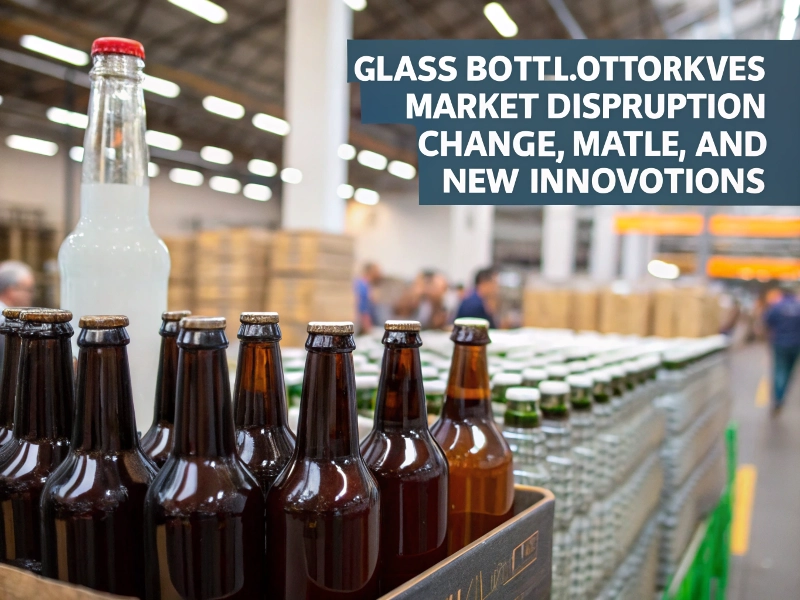
I’ve experienced previous tariff implementations, and the market effects tend to follow predictable patterns, though the scale of this change is unprecedented.
The most immediate change will be a massive rush toward USMCA-compliant sources. I’m already hearing from Canadian and Mexican suppliers that they’re turning away new customers. They simply can’t handle the volume. One Mexican plant manager told me last week they’re booked solid through Q3 2025.
This creates a serious capacity problem. According to industry data from the Glass Packaging Institute, North American glass manufacturing operates at approximately 85-90% capacity utilization in normal conditions. The industry wasn’t built to absorb this much shifted demand overnight. Lead times will stretch dramatically. Quality consistency might suffer as plants run beyond optimal capacity. Prices will inevitably rise as demand exceeds supply.
Domestic US producers are in a particularly strong position. One American manufacturer raised prices 4% the day after the IEEPA announcement, citing "market conditions." They know they’re suddenly the most attractive option for many buyers.
For companies heavily reliant on Chinese or other high-deficit country sources, this is a significant business challenge. I’ve heard from several smaller importers who are concerned about their ability to maintain profitable operations. The math simply doesn’t work at the new tariff rates.
We’ll also see significant customs delays and confusion initially. With multiple tariff layers, country-specific rates, and USMCA documentation requirements, mistakes and delays are inevitable. Budget extra lead time for shipments arriving around the implementation dates.
Price inflation will ripple through the supply chain. The government fact sheet suggests these tariffs won’t significantly impact consumer prices, but industry economics suggest otherwise. The margins in most industries using glass packaging are too thin to fully absorb 10%+ cost increases. Consumers will ultimately pay more, though the exact impact will vary by product category.
The stated goals behind the policy – reciprocity, reducing trade deficits, reshoring manufacturing, and national security – might be achieved longer-term. But in the immediate future, expect significant disruption as markets adjust to this new reality.
What are your critical next steps?
With the tariff implementation just weeks away, here’s your urgent action checklist to navigate this challenging transition and protect your business.
Take immediate action: identify all incoming shipments by origin, confirm applicable tariff rates, verify USMCA compliance, contact suppliers in high-deficit countries, update cost calculations, review customer pricing, and monitor official channels daily for updates on reciprocal rates.

I’m working with clients on this exact checklist right now. Here’s what you need to do:
-
Identify all incoming shipments and their origins – Create a complete inventory of glass bottle orders in transit or planned for the next 90 days. Flag those arriving after April 5th and categorize by country of origin.
-
Confirm applicable tariff rates immediately – Apply the baseline 10% to most origins, verify USMCA status for North American suppliers, and estimate potential reciprocal rates for high-deficit countries.
-
Verify USMCA compliance NOW – If sourcing from Canada or Mexico, obtain and verify all documentation required for 0% tariff qualification. One client found they needed to adjust material sourcing to maintain compliance.
-
Contact suppliers in potential high-tariff countries – Have direct conversations about cost-sharing, expedited shipping options, and longer-term relationship plans. Be transparent about your challenges while exploring solutions together.
-
Update landed cost calculations and budgets – Revise all financial projections to include new tariff rates plus the "pain premium" of additional costs. Run both best-case and worst-case scenarios immediately, don’t wait for final reciprocal rate announcements.
-
Review customer pricing – Determine what portion of increased costs can be absorbed versus passed through. Develop clear communication strategies if price increases are necessary.
-
Explore alternative sourcing urgently – Evaluate domestic options and alternative countries with potentially lower reciprocal rates. Be realistic about capacity constraints and lead times.
-
Monitor official channels daily – Check CBP, USTR, and White House announcements for updates, especially regarding specific reciprocal rates and implementation details.
The businesses that survive and thrive through this disruption will be those that move fastest with the best information. This isn’t a time for wait-and-see strategies. Every day matters when deadlines are this tight.
I’ve seen clients completely transform their supply chains in weeks when necessary. It’s challenging, but entirely possible with focused effort and clear priorities.
Frequently Asked Questions
What happens if my shipment is already at sea when the tariffs take effect?
Tariffs are assessed based on the date of entry into the US, not the shipping date. If your shipment arrives after April 5th, it will be subject to the new tariffs regardless of when it was ordered or shipped. Consider expedited shipping options for critical orders if possible.
Can I apply for tariff exemptions for glass bottles?
Currently, there’s no specific exemption process announced for glass bottles under the IEEPA declaration. However, the USTR typically establishes exclusion processes for major tariff actions. Monitor the USTR website (ustr.gov) for potential exclusion request procedures, which may be announced after implementation.
How will these tariffs affect my ongoing contracts with overseas suppliers?
Most supply contracts don’t include provisions for government-imposed tariffs of this magnitude. Review your contracts for "force majeure" or similar clauses, but generally, importers bear the burden of tariffs. This is why immediate supplier negotiations are critical.
Are there any alternatives to glass packaging that might be less affected?
Some product categories can consider alternatives like premium plastics (PET), aluminum, or sustainable packaging options. However, for products where glass is essential (wines, spirits, premium cosmetics), material substitution may not be viable. Consider lightweighting existing glass designs instead.
Conclusion
The IEEPA tariffs represent the most significant disruption to glass bottle imports in decades. By understanding the specific rules, calculating true costs, taking immediate action on sourcing, and strategically positioning your business, you can navigate these changes while competitors struggle. The clock is ticking – start implementing your response plan today.




